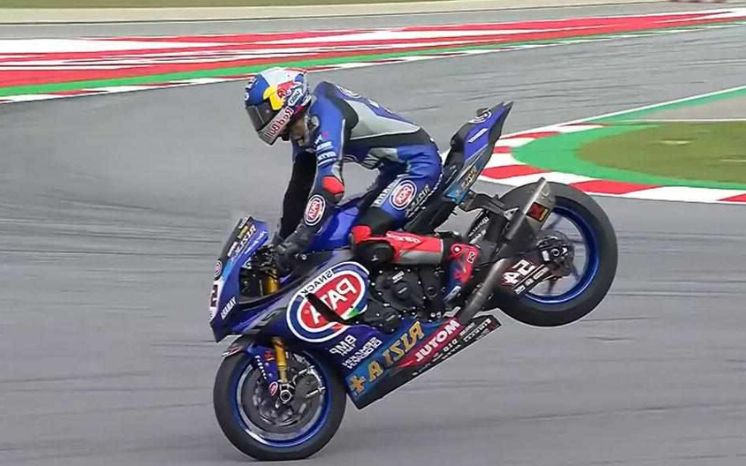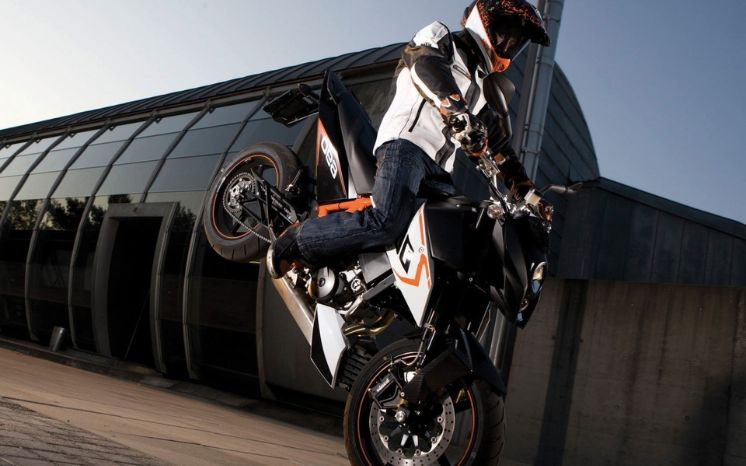Motorcycling is a thrilling hobby, and learning to maneuver your bike with skill is part of the adventure. One such maneuver that catches the eye is the ‘stoppie.’ It’s a stunt that requires finesse, control, and a solid understanding of your motorcycle’s capabilities.
In the pursuit of learning how to perform a stoppie, understanding the physics and mechanics involved is essential. It’s not just about pulling the front brake at high speed; it’s a calculated action that involves weight distribution, braking force, and timing.
This guide aims to break down the process of how to ‘stoppie’ a motorcycle. We’ll go through the necessary steps and precautions, ensuring a safe yet exhilarating experience. Please note that this is an advanced maneuver, and it requires a significant level of riding experience. Practice with caution!
How To Stoppie Motorcycle
A stoppie, also known as a front-wheel endo or nose wheelie, is a motorcycle stunt where the rear wheel of the bike lifts off the ground while the front wheel stays planted. It’s a popular trick among sportbike riders and is often seen in motorcycle stunt shows and competitions.
While it may seem like a dangerous and reckless maneuver, performing a stoppie involves precise control and technique. It’s not something that can be mastered overnight, but with practice and proper guidance, anyone can learn how to do a stoppie safely.
The Basics
Before attempting a stoppie, it’s crucial to have an understanding of the basics of motorcycle riding. You should be comfortable with shifting gears, braking, and balancing the bike at low speeds. Additionally, make sure you have a properly maintained and functioning motorcycle, including the brakes.
Step 1: Find A Safe Practice Area
Since learning how to do a stoppie involves trial and error, it’s essential to find a safe practice area. Look for an empty parking lot or a secluded road with no traffic. The surface should be smooth and free of any debris that could affect your traction.
Step 2: Reduce Speed And Shift Weight
Approach the practice area at a moderate speed, around 20-30 mph. As you get closer to the designated spot, start gradually reducing your speed by gently applying pressure on the front brake lever. At the same time, shift your body weight towards the front of the motorcycle by leaning forward.
Step 3: Applying The Front Brake
As your weight shifts towards the front, apply more pressure on the front brake lever until you reach the point just before the wheel locks. This threshold varies depending on your motorcycle’s make and model, so it’s essential to practice and get familiar with it.
Step 4: Using Clutch And Throttle
At this point, you may need to use the clutch and throttle to help keep your bike’s front wheel off the ground. You can either release the clutch quickly or rev the engine while simultaneously releasing the brake lever.
Step 5: Finding The Balance Point
As you start lifting the rear wheel, focus on keeping your body weight over the handlebars and maintaining a balance between the front and rear brakes. This balancing act is crucial to keeping the bike in a stoppie position.
Step 6: Practice And Repeat
Learning how to do a stoppie takes time, practice, and patience. It’s essential to start with small and short stoppies and gradually build up as you gain more experience and confidence. Remember always to wear proper safety gear and never attempt a stoppie on public roads.
In conclusion, learning how to stoppie a motorcycle is not something that can be learned overnight. It takes practice, patience, and a solid understanding of your bike’s capabilities. By following the steps outlined in this guide and continuously honing your skills, you’ll soon be able to perform impressive stoppies with confidence and control.
See more: How To Winterize Motorcycle
FAQs
Performing a stoppie on a motorcycle tends to raise a lot of questions, especially for beginners. We’ve compiled some frequently asked questions about stoppies to provide further clarification and guidance.
What kind of gear do I need to perform a stoppie safely?

To perform a stoppie safely, you need to equip yourself with high-quality protective gear. This includes a certified motorcycle helmet, motorcycle gloves, a jacket with padding or armor, knee pads, and motorcycle boots. The helmet is crucial as it protects your brain and face in a crash.
Motorcycle-specific gloves will safeguard your hands, which are often the first thing to touch down in a crash. A jacket with padding or armor will shield your upper body, while knee pads will protect your knees. Finally, motorcycle boots are designed to protect your feet and ankles while providing the necessary grip for foot controls.
Are certain types of motorcycles better for performing stoppies?
Yes, certain types of motorcycles are better suited for performing stoppies due to their weight distribution and brake setup. Sportbikes are typically the best type of motorcycle for performing stoppies.
They have a forward weight bias and strong front brakes, making them ideal for this type of maneuver. That being said, with enough practice and control, a skilled rider can perform a stoppie on almost any type of motorcycle. It’s crucial to understand your motorcycle’s capabilities before attempting a stoppie.
Is there a specific tire type or condition that’s ideal for stoppies?
Having the right tires can significantly affect your ability to perform a stoppie. Sport or performance tires are usually the best choice because they offer excellent grip and control, which are essential for stoppies.
The condition of your tires is also important. They should be properly inflated and free of any damage or excessive wear. A tire without the proper tread can lose traction, causing the bike to skid instead of lifting the rear wheel.
How can I make my stoppies longer and higher?
Improving your stoppies comes down to practice, control, and understanding the balance point of your bike. The more you practice, the more familiar you’ll become with how your motorcycle reacts to the maneuver. Increasing the height and length of your stoppies will require a delicate balance of brake pressure and weight distribution.
As you become more comfortable, you’ll be able to apply more brake pressure and shift your weight forward more aggressively, which will result in higher and longer stoppies. Always remember to focus on control and safety before trying to increase the intensity of your stoppie.
Final Thought
Mastering the stoppie on a motorcycle is a challenging but rewarding journey. It requires a deep understanding of your motorcycle’s dynamics, expert control over its brakes, clutch, and throttle, and a keen sense of balance. It’s about more than just the thrill; it’s a testament to your skill and control as a rider.
Understanding how to stoppie a motorcycle is a continuous learning process. As you practice, you’ll become more familiar with your bike’s balance point and how it responds to different levels of brake pressure. Your stoppies will get higher and longer as your confidence and expertise grow.
However, it’s crucial to remember that attempting a stoppie should always be done in a controlled environment and with the appropriate protective gear. Safety should never be compromised for the sake of performing a trick. Even skilled riders must always prioritize safety.
In conclusion, the journey to perfectly executing a stoppie is one of patience, practice, and safety. With time and dedication, you’ll be able to perform this impressive motorcycle maneuver while maintaining full control and safety. Keep practicing and never stop learning. The road to mastering the stoppie is a thrilling ride.
